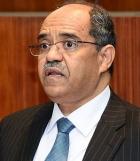In a nutshell
Resource-rich countries must build and maintain a robust macroeconomic framework in the wake of the collapse in commodity prices.
New risks have emerged such as stranded assets – fossil fuel assets that will no longer earn an economic return because of declining demand caused mainly by global environmental concerns.
In the long run, resource-rich economies must move away from resource dependence – and finance and sovereign wealth funds can support that transformation.
The sudden slide in commodity prices in 2014 forced resource-rich developing countries into a rapid adjustment – less painful for those that had built buffers, more for those that had not. Whether the adjustment was more or less painful, resource-rich countries now face a second phase of adjustment: making structural changes to reduce resource dependence.
The challenges over the medium run are enormous, especially considering how difficult it has been historically for these countries to diversify their economies (Venables, 2016). What is more, new risks have emerged, such as stranded assets – fossil fuel assets that will no longer earn an economic return because of declining demand caused mainly by global environmental concerns (McGlade and Ekins, 2015).
A VoxEU eBook based on the proceedings of a conference held in Algiers in May 2016 synthesises some key insights that have emerged from the latest economic research on resource-rich countries (Arezki et al, 2018). The common denominator is that the countries must build and maintain a robust macroeconomic framework in the wake of the collapse in commodity prices. The scholars also advocate thinking differently about the role of finance and diversification in the transformation of these economies.
Shifting landscape
Most studies have emphasised excess supply as the dominant factor in the 2014 oil price collapse. Although historically supply changes have been exogenous to the economy, in this case the increase in supply was caused by powerful shifts in technology triggered by high prices.
These price-driven technological innovations led to the adoption of new recovery techniques, which in turn spawned the development of ‘unconventional oil’, such as that produced from shale. Provided they are effective and widely adopted, improvements in recovery techniques increase the size of recoverable oil reserves, which in turn changes expectations about future oil production – with potentially large and immediate implications for oil prices.
But innovations in recovery techniques are not exogenous. Instead, they come from the market, typically following periods of prolonged high prices or changes in regulations that render them more economic. Innovative drilling techniques such as 3D imaging and hydraulic fracturing – or fracking, in which water is injected to free up petroleum trapped in layers of rock – gave rise to the substantial increase in production of shale oil in the 2000s.
In his first contribution to the eBook, Rabah Arezki argues that the oil market has changed structurally and that the dynamic adjustment to lower oil prices is quite different from past adjustments. Fracking, combined with horizontal drilling, has changed the dynamic of the oil market.
Shale oil production, which can turn around faster and is more resilient to lower prices than conventional techniques, will lead to shorter and more limited oil price cycles. Shale oil production and the uncertainty surrounding its potential and resilience will define the dynamics of the oil market for years to come.
Macroeconomic policy options
In the first of two chapters, Jeffrey Frankel proposes three ways that commodity exporters can make themselves less vulnerable to the vagaries of commodity markets:
- First, they can use options contracts to hedge against short-term declines in the commodity price without giving up the benefits of price increases. Mexico has used options successfully.
- Second, commodity-linked bonds can hedge longer-term risk, and they often have a natural counterparty in multinational corporations that depend on the commodity as an input.
- Third, insulating official forecasters against optimism bias can reduce the well-documented tendency of commodity exporters to engage in pro-cyclical fiscal policies. Chile has pioneered this approach.
In his second chapter, Frankel explores the optimal monetary regime for commodity-exporting developing countries. Normally it is desirable to let the currency appreciate in response to positive terms-of-trade shocks and depreciate during negative shocks. But that approach is precluded if the exchange rate is fixed or if the monetary authorities hew rigidly to rule targeting a consumer prices index (CPI) in conducting policy.
Still, countries need some sort of nominal anchor. So Frankel outlines how monetary policy can be made to respond automatically in a more counter-cyclical manner (judged by the appreciation or depreciation of the currency in response to terms-of-trade shocks). He argues that authorities can either add the export commodity to a currency basket or target nominal income rather than the CPI.
Frederick van der Ploeg argues that the resource-rich developing countries have a bad record in dealing with windfalls and price crashes. He calls for oil and gas revenue to be used to curb capital scarcity, invest domestically and bring consumption forward. The real exchange rate must also appreciate temporarily to boost investment in the domestic economy and to absorb extra spending from a windfall efficiently.
He argues that a Taylor rule, which links monetary policy to specific economic criteria, is a better short-run response to a crash in commodity prices than a policy that relies on a nominal exchange rate peg.
Ragnar Torvik studies the difference in how monetary policy should respond to oil price shocks during temporary and long-term scenarios. If an oil price shock is temporary, the issue is how best to smooth economic fluctuations until normal times return. But if the shock is more persistent, the policy requirements are more challenging:
- First, the economy must diversify so new or expanded non-oil industries can provide alternative sources of foreign exchange earnings or savings (by replacing imports).
- Second, a weakened fiscal position may make it problematic to use taxes or spending to smooth the shock.
Torvik argues that when fiscal policy is constrained, monetary policy becomes a valuable tool in dealing with a permanent shock. It can set the economy on a path towards increased diversification and investment in traded sectors, while fiscal policy expansion may do the opposite.
In his second chapter, Arezki calls for a rethink of how monetary policy in fossil fuel exporters deals with short-, medium- and long-term horizons. He says that central banks in these economies must look beyond the horizon of the business cycle:
- In the short run, (independent) monetary policy should target inflation flexibly.
- In the medium run, central banks need to coordinate with fiscal authorities to ensure monetary policy operates around a credible and sustainable fiscal anchor.
- In the long run, central banks should be aware of the grave threats posed by risks such as those related to stranded assets – fossil fuel deposits that will never be recovered because of declining demand caused mainly by global environmental concerns.
Finance and diversification
In the long run, resource-rich economies must move away from resource dependence – and finance and sovereign wealth funds can support that transformation.
Thorsten Beck finds that financial development is as important for economic growth in resource-rich countries as in other countries. But he finds a natural resource curse in financial sector development – resource-rich countries tend to be less financially developed, everything else being equal.
Further work is needed to discern the policies and institutions needed to overcome the natural resource curse in finance. Is it a question of ensuring that the necessary institutions for an effective and stable financial system are in place in resource-rich countries or are additional steps necessary?
Moreover, there is a question about the extent to which recent regulatory reforms in finance should be adjusted for resource-rich economies. Since 2008, there has been a significant push towards stronger capital requirements, the introduction of liquidity requirements, and an increasing role for macroprudential regulatory tools. Because of higher volatility in resource-related revenues, and therefore in deposits and lending in developing economies, macroprudential policies might be more important for resource-rich countries than others.
In his second contribution, van der Ploeg argues that to cope with volatile commodity prices, precautionary buffers should be put into a stabilisation fund. No oil and gas revenue should be invested in the domestic economy unless the country has imperfect access to international capital markets. Revenue must then be used to reduce capital scarcity by investing domestically and by bringing consumption forward. The revenue can then be parked temporarily in an investment fund.
Thorvaldur Gylfason calls economic diversification one of several potential drivers of sustained economic growth. He argues that due consideration should be paid simultaneously to economic and political diversification. Political diversification is the democratisation of political processes that reduce the risks and vulnerabilities of excessive dependence on a narrow political base. Political diversification can be viewed as the twin sister of economic diversification, which reduces reliance on a single industry.
Jean Imbs explains why developing economies are notoriously more specialised than advanced ones. Over the course of development, poor countries diversify as the allocation of factors of production becomes increasingly uniform across sectors. The starting point is typically an economy specialised in primary goods or extractive activities.
During the industrialisation process, a manufacturing sector emerges first, followed by others, as manufacturing itself diversifies and factors are allocated more equally across industries. This chronology seems to characterise not only the economic miracles of the twentieth and twenty-first centuries – such as China, Germany, Japan and Korea, among others – but the Industrial Revolution itself.
But Imbs suggests that diversification is hindered when economies cannot integrate locally. The emergence of a manufacturing sector in Africa has been strongly hampered by the absence of local market access. Increasing returns to scale are hard to achieve when market size is constrained, often making the costs of opening new activities exceed their benefits. Thus, specialisation in primary, agricultural sectors persists over time, as entrepreneurs do not find it worth their while to open up new sectors. International trade does not help, because it mostly creates incentives to serve the international market, which for Africa means commodity exports.
Further reading
Arezki, Rabah, Raouf Boucekkine, Jeffrey Frankel, Mohammed Laksaci and Frederick van der Ploeg (2018) Rethinking the Macroeconomics of Resource-Rich Countries, VoxEU.org.
McGlade, Christophe, and Paul Ekins (2015) ‘The Geographical Distribution of Fossil Fuels Unused when Limiting Global Warming to 2°C’, Nature 517: 187-90.
Venables, Anthony (2016) ‘Using Natural Resources for Development: Why has it Proven so Difficult?’, Journal of Economic Perspectives 30(1): 161-84.
This column was originally published at VoxEU.






